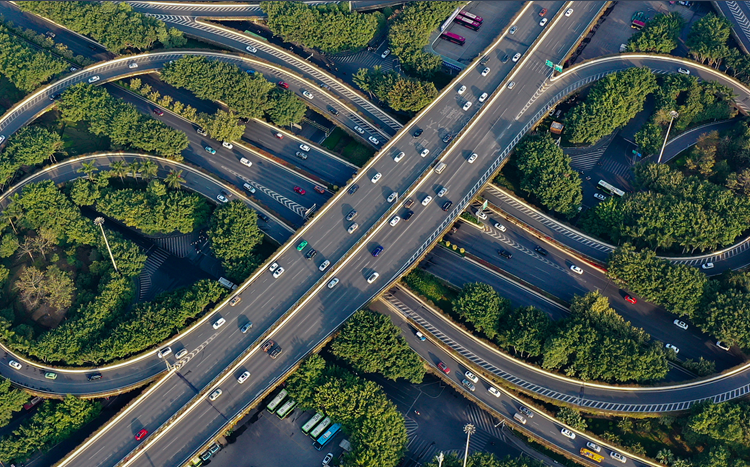Range of projects improve rural lives
Investment brings major changes
Qin Zhaozhi, 29, a roads inspector from the Guangxi Zhuang autonomous region, has visited the regional capital, Nanning, only four times.
For decades, there was just one road for people to escape the monotony and isolation of Qin's home in Huanjiang Maonan autonomous county in northern Guangxi, where he was born, raised and educated.
Cars recently became affordable for members of his Maonan ethnic group, but before that, Qin would set out by bus for Nanning before dawn to visit its shops and entertainment venues. Reaching the city entailed a lengthy journey in a darkened vehicle that crept along winding lanes clinging to cliffs. He was lucky to reach his destination before nightfall.
On arrival in Nanning, the travel-weary passengers were greeted by the sounds of a bustling city, flashing neon signs and other aspects of urban life they never experience at home.
"The bus ride was a headache, but it was worth it to reach the city, which mesmerized me," Qin said.
However, it soon will be much quicker for him and others to escape the isolation of home, as a high-speed railway is being built to link Nanning with Guiyang, capital of neighboring Guizhou province, as part of a push to integrate regional development.
Situated midway between the two economic heartlands, Huanjiang is poised to benefit.
The county, which is home to more than 70 percent of China's some 100,000 Maonan people and also to other ethnic groups, used to be entrenched in poverty.
Last year, local authorities announced that the county no longer had any poor residents-a result of the sweeping campaign to eradicate rural poverty.
This achievement marked a milestone in the history of the Maonan people, one of a few dozen ethnic groups with small populations in China that until recently have led slash-and-burn lifestyles.
"A flyover carrying the railway can be seen from my village," Qin said.
Thanks to the anti-poverty campaign, paved roads now reach rural families. Better transportation links, which have reduced costs, have prompted farmers to shift to cash crops such as tangerines, Qin added.
With the pandemic under control in China, heavy machinery resumed operating at more than 200 construction sites in Guangxi alone earlier this month, as workers raced to drill tunnels, build bridges and lay rail tracks.
Regional authorities said they plan to pump 850 million yuan ($131 million) into the rail project in the first quarter of this year. They hope the 500-kilometer bullet train line will be in use by 2023.The total cost of the project is estimated at 13.1 billion yuan.
When the link is completed, it will take less than two hours to travel from Nanning to Guiyang, which will be a boon for local tourism, experts said.
For locals, the railway has become a source of pride.
Tan Chunli, a railway worker from the Maonan ethnic group in Liuzhou, Guangxi, said she takes photos of the fast-growing rail line every time she returns home to Huanjiang.
"I hope the bullet train service will bring more visitors to Huanjiang to admire its breathtaking scenery," she said.
Highway project
Meanwhile, work on a new highway is due to start this month.
The link, which will connect Huanjiang with Libo, Guizhou, a scenic location known for its karst mountains, will be the first highway to pass through Huanjiang, according to the county government.
Huang Bingfeng, the county head and a deputy to the National People's Congress, the country's top legislature, said Huanjiang has tourism resources that rival those in Libo, which welcomes more than 20 million visitors a year due to bridge-building and other infrastructure projects in recent years.
However, only 2 million visitors arrive in Huanjiang annually, he said, adding, "The highway will help divert some tourists to the county."
Guizhou Party secretary Sun Zhigang said at a news conference in Beijing in 2019 that the province had earned the title "the world's museum for bridges" due to numerous construction projects that have resulted in nearly half the world's 100 highest bridges falling within its jurisdiction.
Huang, an ethnic Maonan, said he suggested during the recently concluded annual two sessions that another highway be built linking the county with Rongjiang, Guizhou, which is known for its revolutionary-themed scenic spots, which attract "red tourism". The suggestion was greeted enthusiastically among delegates from the transportation sector.
The infrastructure projects underway are part of a broader effort by local authorities to build a "one-hour economic zone" for the once-impoverished county.
Huang said that when the projects are completed, Huanjiang will be just one hour from major nearby cities by train or car.
"I believe these projects will help usher in a new era for local tourism, agriculture and industry," he said, adding that the county is catching up in fields such as electronic manufacturing and clean energy.
National strategy
Huanjiang is among the choices for new transportation projects aimed at bringing vitality to the nation's less-affluent areas.
In 2019, central authorities unveiled a blueprint for vitalizing China through better transportation links from this year to the middle of the century.
One stated goal is to make the country's major cities within three hours travel time of one another before 2035. Another is to create one-hour commuter zones for all cities during this period.
The blueprint also promises favorable policies for railway networks and airports that benefit rural tourism and agricultural production.
Qin, the road quality inspector, is working on a new road linking Huanjiang with nearby Luocheng Mulam autonomous county.
Expected to open by the end of this month, the link will shorten travel time between the two counties and benefit a number of communities dotting the karst mountains in between.
"I now see more farmers going to their fields on electric scooters," Qin said. "The road will make it easier to transport organic farm produce to a larger consumer market."

















